There’s a point in Life is Strange: Double Exposure where detective Vince Alderman asks Max: “Are you the one who’s unlucky or is it just everyone who ever meets you?” It might be a little harsh, sure, but he’s not wrong to say it. Double Exposure does a lot of retreading old narrative ground of its predecessor: dead besties, sus teachers, secret societies, a third girl whose mystery permeates the overarching story… you get it.
Need to Know
What is it? The sequel to Don’t Nod’s 2015 time-bending adventure romp.
Release date October 29, 2024
Expect to pay $50/£50
Developer Deck Nine Games
Publisher Square Enix
Reviewed on Nvidia GeForce RTX3070, AMD Ryzen 7 2700X, 32GB RAM
Steam Deck TBA
Link Official site
Considering Max’s time-rewind power of 2015’s Life is Strange (the one by Don’t Nod, rather than Deck Nine) is nowhere to be seen this time, I was getting a little more deja vu than I anticipated. A decade after leaving Arcadia Bay—which is either hurricane-torn with an alive Chloe Price or still picking up the pieces from her murder—Max is in her late 20s, now milling around a university as a lecturer-slash-resident artist rather than a student.
She’s largely left Arcadia Bay and its people behind—she regularly ignores texts from her parents, with only one Blackwell Academy alum (or two, if Chloe is alive) making an appearance on her social media timeline. Instead, Safiya and Moses make up Max’s new friend group, the former being the university president’s daughter, the latter an astrophysicist graduate.
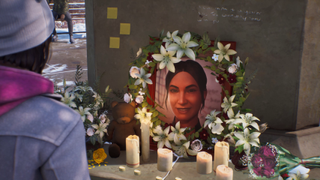
Her time warping has been put to rest as a result of the damage and subsequent trauma Max endured throughout the first game. That is, until Safi is found shot dead. Cue power reawakenings—this time in the form of timeline hopping rather than rewinding—and desperately trying to avoid the same fate that befell Chloe or Arcadia Bay.
Point-and-shoot
For the most part, I really enjoyed playing around with Max’s new powers. She can swap between a world where Safi is alive and well, the world in warm tones and twinkly Christmas lights, and another, colder reality where Caledon University is mourning her loss. A few puzzles sprinkled throughout Double Exposure have Max using her powers to break into places that are inaccessible in one timeline, or squeezing information out of a character in one dimension before zipping over to the other one to use it as leverage.
My main gripe with the whole thing is that, towards the end of the game, it largely becomes “head to this timeline to talk to this person.” Which is fine, but there’s a particular segment in Chapter 2 where Max has to grab items and bring them between timelines and make use of positioning to avoid detection. It’s easily one of the best showcases of the mechanic, but the game never really gets close to using it to that extent again. There’s another neat segment in one of the later chapters using Max’s ability to see into one timeline from the other, but it’s brief and a little clunky to navigate.
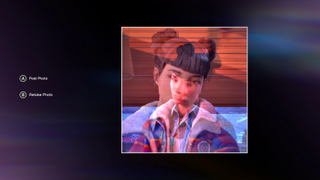
I also have an issue with the sound Double Exposure uses to audibly mark the set locations where you can tear through dimensions. It’s an awful high-pitched tinnitus-adjacent ringing sound that gets more intense the closer you are—it fits well narratively with all of Max’s pounding headaches, but I’m not sure I wanted such an intense level of immersion that it was also giving me pounding headaches a few hours into hearing it. Considering there’s also visual clues for the shift spots, I wish Deck Nine had toned it down a touch.
It’s not the only audio issue in the game, either. I don’t think my volume buttons have ever seen so much use from a single videogame. The sound mixing is wildly inconsistent—cutscene conversations ramped up in volume until my speakers were vibrating, while trying to eavesdrop on another timeline’s conversation or even a discussion between characters in my current timeline was quiet as a mouse.
It was all the more annoying because these random NPC conversations went a long way in doing some much-needed worldbuilding. A group of staff rallying for a four-day workweek offers insight into a more unpopular side of university president Yasmin, while whispers among students forming alliances for a campus-wide game of Assassin is a nice unrelated glimpse at college life.
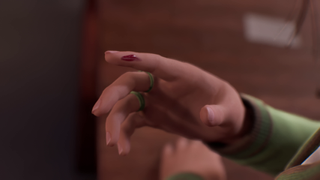
If not for the subtitles, I would have regularly missed these conversations happening. Even then, I found myself impatiently tapping my foot during frustrating gaps of silence between each NPC’s line of dialogue, making me think the conversation had abruptly concluded before they jumped back in, acting like they hadn’t just spent the last five seconds staring into the void.
Hot shot
I say that it’s much-needed worldbuilding, because Double Exposure is filled with interesting concepts and a story that, at times, had me on the edge of my seat. The ending of the second chapter had me particularly excited, and did ultimately conclude in a way that I felt satisfied with. But it also often fails to act on its more interesting setups. A character I had expected to stick around for the duration is abruptly wiped from existence, never to be mentioned again.
A particularly damning implication of messing around with timelines had me hoping it would become a major plot point, only for it to never resurface. More interesting questions around powers and using them responsibly begin to emerge towards the end of the game, but it’s clearly done to set up a sequel rather than to immediately provide any answers. Choices also ultimately do very little to impact any of the larger narrative moments, with major decisions mostly being relegated to changing tiny, non-intrusive sub-sub-subplots.
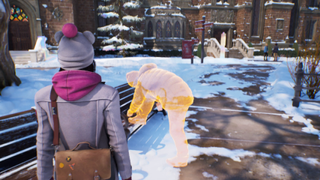
Double Exposure also has the events of the first game lingering in the background. Personally, I think it was handled well. For the record, I’m coming at this as someone who exists in a “sacrifice Chloe” headcanon, and I didn’t have enough time to run through the whole thing again with Chloe still kicking about in the world. But watching Max navigate her trauma, often in very unhealthy ways, was refreshingly realistic.
Small throwbacks like the storm and voice snippets of Chloe’s unfortunate bathroom encounter with Nathan Prescott are dropped in occasionally, in a way I never feel overstays its welcome. Later segments where Max explores her trauma more deeply were impactful moments, just the right amount of punch where I felt like Deck Nine wasn’t leaning too heavily on Don’t Nod’s work.
Ultimately, as someone who’s been around Max’s age for both of these games, I couldn’t help but feel a certain kinship through Double Exposure. I saw parts of myself reflected in her, now all grown up—her heightened confidence and self-assuredness, while still carrying the vulnerabilities of her past and the subsequent emotional wall she holds around her.
It’s nice to see a game with some pretty firm bisexual representation, too. While it was kind of there in the original, it’s far easier to play Max as overtly bi in Double Exposure. She has the opportunity to romance both a male and female character—while I still perceived the game as leaning more towards the female romance, it still felt considerably more balanced than the first game—and an entire scene is dedicated to which faculty she’d happily get down and dirty with.
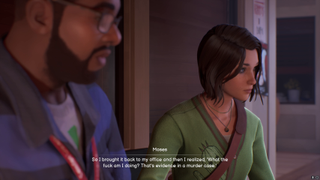
The rest of the cast ends up mostly likeable too: Amanda plays the cool barkeep exceptionally, half-charmer half-douche Vihn still makes his mark even if I found him underutilised, and Moses really grew on me as Max’s companion. Safi is easily the most interesting character on offer, though. Even if her character development is largely back loaded and a little rushed, she’s still by far my favourite of the bunch, with Olivia AbiAssi shining in the role and doing a lot to bring her personality to life.
Ultimately, though, I feel like a lot of these characters didn’t have time to fully develop. I wonder if having two timelines—and subsequently two branching character developments—hampered the story more than helping it. Coupled with Double Exposure’s parallel narrative arc being a little too similar and on the nose for my liking at times, and I have to wonder if we needed a sequel at all.
The answer is probably no, but I couldn’t help but find myself invested nonetheless. Part of that may have been nostalgia-driven, but I still found myself exploring every nook and cranny and eavesdropping on every side conversation for just a little more of that worldbuilding.
Honestly, I think Double Exposure would have been better served by nixing a few of its support cast. Above all, it absolutely should have taken its major concepts that it begins to develop in later chapters and made them the forefront of the story from the get-go. Instead, I suppose we’ll be waiting for Life is Strange: Triple-base ISO.
